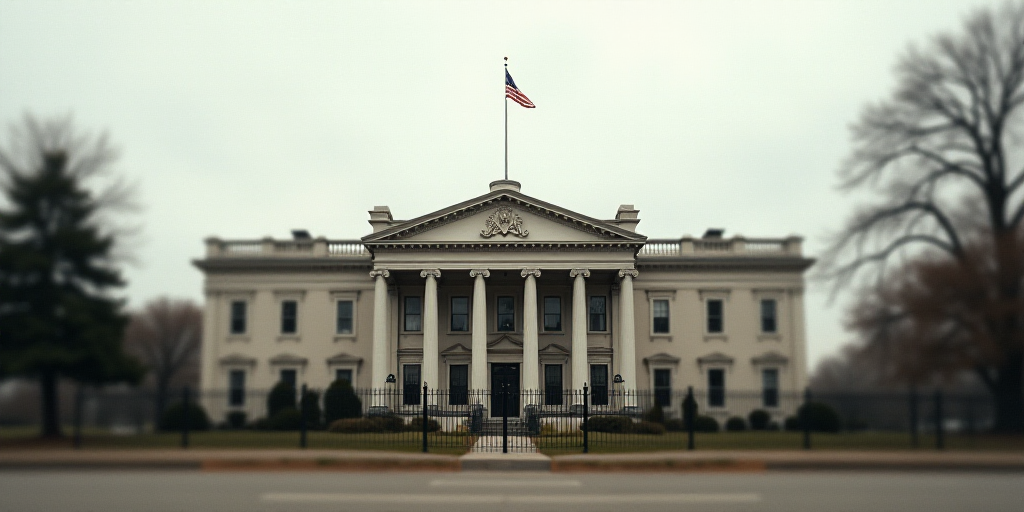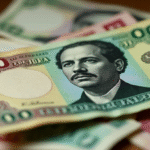Background on the Federal Reserve (Fed) and its Beige Book
The Federal Reserve (Fed), the central bank of the United States, conducts a periodic survey in the form of a questionnaire to economic agents and experts. This survey, known as the “Beige Book,” provides insights into the economic conditions across various regions in the country. The information is gathered from contacts within commercial and community sectors of each of the 12 regional banks affiliated with the Fed until July 7.
Economic Activity Increases, but Outlook is Pessimistic
According to the Fed’s latest Beige Book report, released on Wednesday, US economic activity has seen a slight increase over the past few weeks. However, the overall outlook remains neutral to pessimistic as businesses report that the higher tariffs imposed by the Trump administration are driving up costs.
“Contact across a wide range of industries anticipated that cost-pressure would remain elevated in the coming months, increasing the likelihood of consumer price inflation rising more rapidly by late summer,” the report states.
Employment and Hiring
The Fed noted that employment increased very slightly, with many contacts expecting to postpone significant hiring and firing decisions until uncertainty decreased.
The Fed has maintained its target range for the federal funds rate at 4.25%-4.50% since December, and it is widely expected to keep rates steady at least until September as they monitor the economy’s response to trade and other changes under President Donald Trump.
Trump has demanded the Fed cut rates immediately, and a couple of monetary authorities within the bank have suggested they might consider this as early as the July 29-30 meeting to prevent further weakening of the labor market.
However, most Fed officials believe that the labor market remains robust despite some cooling signs, such as increased continuing jobless claims and slowed employment growth. They are reluctant to lower rates when they anticipate that higher-than-decade tariffs will drive up prices in the coming months, potentially undoing recent inflation progress.
Inflation Trends
As evidence that the process is underway, US consumer prices rose in June by the most in the past five months, driven by increased values of certain imported goods like clothing, furniture, toys, and sporting goods.
However, wholesale prices in June did not rise as much, and economists estimate that the personal consumption expenditure (PCE) price index for June—which the Fed tracks to measure progress toward its 2% inflation target—will be at 2.7%, not exceeding May’s level.
Divergent Views Among Fed Officials
The President of the Fed’s Dallas branch, Lorie Logan, is among those who expect to wait until fall before data clearly shows the impact of tariffs on inflation. Her counterpart at the Fed’s Boston branch, Susan Collins, and others have suggested that tariffs might not drive inflation as much as initially feared.
To understand precisely what may unfold, the Fed’s monetary policy makers say they are closely watching the everyday experiences of individuals and businesses highlighted in the Beige Book.
Key Questions and Answers
- What is the Federal Reserve’s Beige Book? The Beige Book is a collection of anecdotal information compiled by the Federal Reserve’s 12 regional banks, summarizing current economic conditions across the United States.
- What does the recent Beige Book report indicate about the US economy? The report shows that economic activity has increased slightly, but the overall outlook remains pessimistic due to rising costs driven by higher tariffs imposed by the Trump administration.
- How is the labor market performing according to the Beige Book? Employment has increased very slightly, and many contacts expect to postpone significant hiring and firing decisions until uncertainty decreases.
- What are the expectations for inflation based on the Beige Book? Contacts across various industries anticipate that cost pressures will remain elevated, increasing the likelihood of faster consumer price inflation by late summer.
- Why are Fed officials divided on the impact of tariffs on inflation? Some officials, like Lorie Logan, expect to wait until fall for clearer data on tariffs’ impact. Others, like Susan Collins, believe that tariffs might not drive inflation as much as initially feared.






